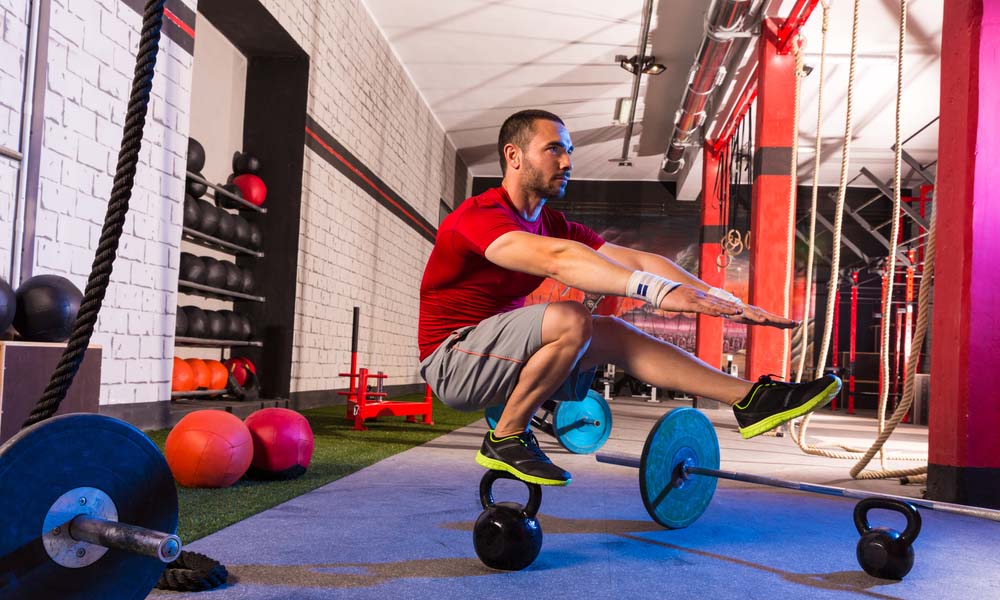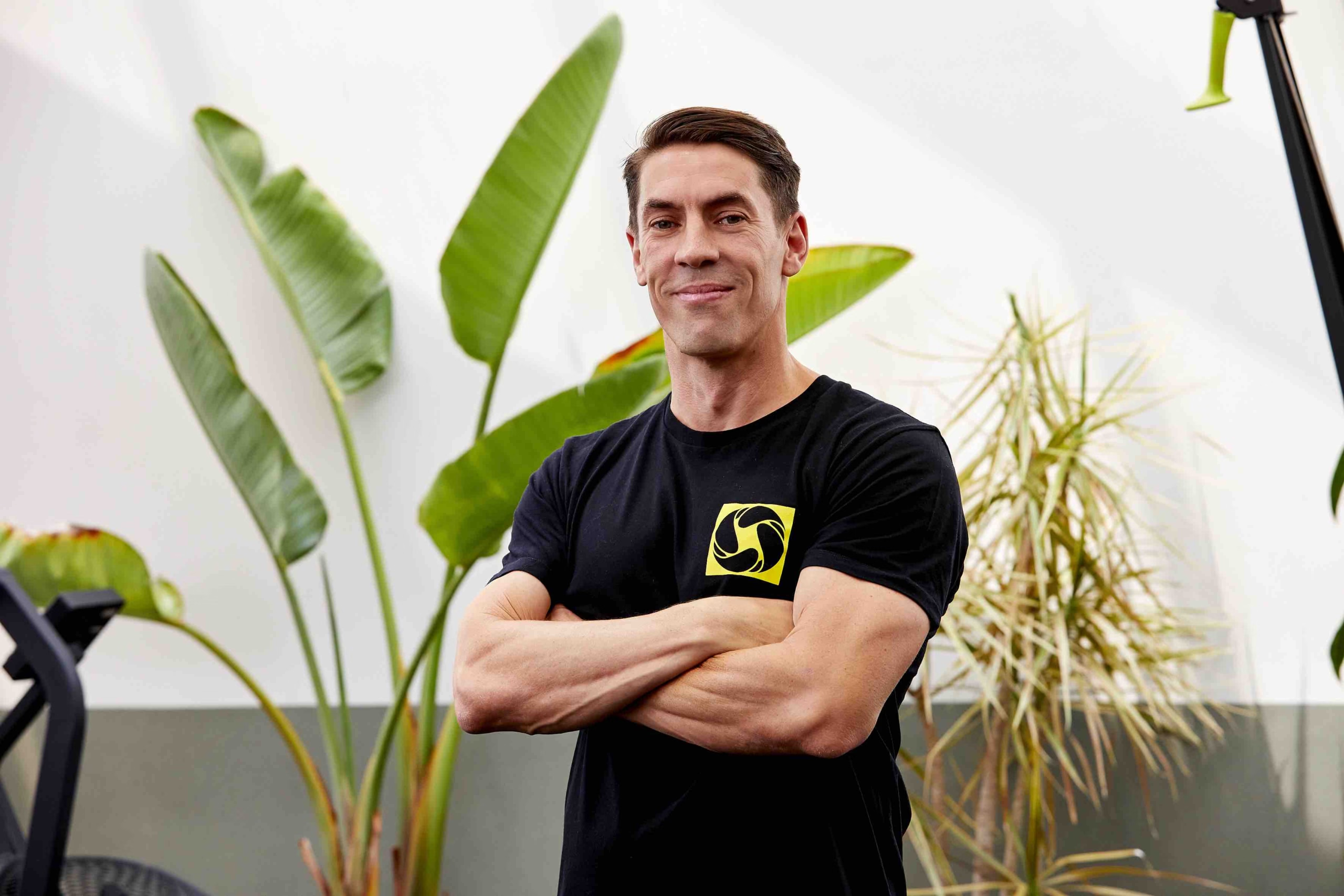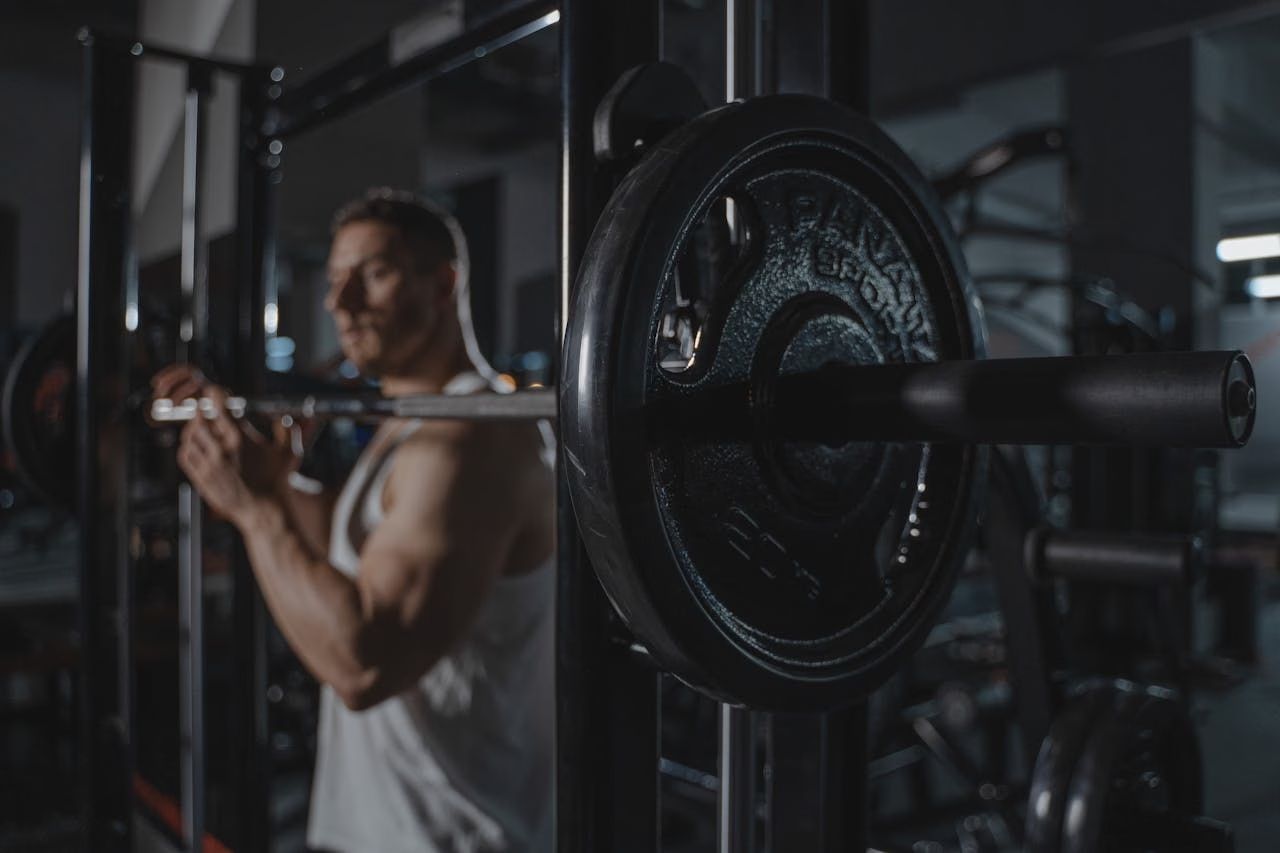If your knees have been weakened over the years by a workout-related injury, overuse through sports like running, or just plain aging, take note of these risky moves. Bodyweight moves are considered one of the safest modes of exercise since you’re working sans equipment, but certain ones can seriously damage your joints.
Here, physical therapists Chris Kolba, Ph.D, C.S.C.S., and Doug Ebner from The Ohio State Wexner Medical Center point out the worst offenders. The following seven bodyweight moves are ones that are often done incorrectly or, because of the nature of the move, flat out strain the knee and put too much stress on ligaments. For the moves that require simple tweaks, Kolba and Ebner have indicated what changes need to be made. As for the bondafide knee-busters? They’ve provided alternative exercises that will save you pain and offer optimal results.
Single-leg squat (with poor knee control)
Pistol squats require a tremendous amount of lower-body strength and balance since you’re sustaining a crouched position—on one leg. Just a few reps will tire out major muscles like your glutes, quads, and hamstrings, and smaller stabiliser muscles along your ankles and knees. Because single-leg squats are so difficult to master (considered a benchmark in the fitness world), they’re also an exercise that puts you at high risk for injury when performed without proper form. Most people have poor knee control when they try to lower down into the bottom position of the squat, for example. If you notice your knee bows or dips inward toward your other leg, stop. “By letting your knee collapse to the midline you’re subjecting the medial knee (inner side), the patella (knee cap), the meniscus, and the anterior cruciate ligament to increased stress and possible injury,” Kolba explains.
Try this instead: Elevate and support your back leg and perform Bulgarian split squats. Really focus on your form. And when you do improve your leg strength and stability, and want to give pistol squats another shot, try sitting down on a chair or box and standing up on one leg with the other one outstretched in front of you. Do 3 sets of 10 on each leg for at least two or three weeks before moving on to a lower chair or object.
Full-depth lunge (hitting knee on ground)
The stronger your legs are, the safer your knees. Your muscles help stabilize, absorbing the brunt of heavy loads and lightening the stress on your joints. In effect, lunging can help safeguard your body from injury. The problem is you could be approaching lunges all wrong.
When lunging, you really want to keep your front knee in line with (but not exceeding) your ankle. You want your back knee pointing straight down toward the floor, in line with your shoulders and hips. While your shoulders are down and core engaged, you want your back and chest to be upright. You don’t want your forward knee to dip inward. For people with healthy knees, lunging as deep as possible recruits the most muscle. But it also can cause damage if you’re over-exaggerating the motion. “By hitting your knee to the ground, you could irritate the fluid sac sitting on top of your patella (knee cap), causing pain and swelling, bruising, even dislocation and fracture,” Kolba says. Aside from the irritation, you’re making the movement less fluid and abrupt, which decreases the force and power, Ebner adds.
Try this instead: “I normally tell people to try and get 90° at both knees, which should take the knee “almost” to the ground,” Ebner says. If that still bothers you, don’t lower into the full depth of the lunge (i.e. keep your rear knee from lowering too much). If you’re not feeling enough muscle engagement and activation, perform jumping lunges focusing more on the explosive jump up rather than the deep lowering down. You can also perform a shallow lunge with a shorter stance to hit your vastus medialus, the “tear drop” muscle in your lower quad that helps with stability.
Duck walks
The number of people who love duck walks are few and far between. And for good reason: Duck walks can be seriously tough on your knees. The full-flexion movement puts a ton of stress on your knee ligaments and cartilage, Kolba explains, and you’re twisting on top of the loaded position. Worse yet, the exercise doesn’t really accomplish much. You’re not going to build slabs of muscle or torch calories.
Try this instead: If you’re deadset on incorporating them, Kolba says you can squat down just until your thighs are parallel to the floor, then perform a duck walk, to alleviate some of the knee stress. Better yet, skip traditional duck walks altogether to eliminate your risk of ligament or meniscus tears. Instead, incorporate jumping squats and wall sits to build up muscle strength and definition.
Plyometrics
Whether your knees are in rough shape from injury or repetetive exercising, “impact forces from running and jumping (which can be as high as 2-5 times your bodyweight) can significantly accelerate the arthritic process, especially in the presence of muscle imbalances,” Kolba says. Yes, arthritis can pose a problem for you, even if you’re in your 20s or 30s.
Try this instead: Still, moves like box jumps are a great way to build explosive power. Just make sure you’re landing lightly on top of the box, then stepping down (one foot, then the other) so you don’t jar your knees. Ebner adds: “For the healthy, athletic population with proper leg strength and control, plyometrics are an important part of training if they’re done with good form. For people who don’t have the proper strength and control, or have any injuries, these exercises probably aren’t a good idea.” If any type of jumping or running hurts, try exercising on an elliptical, stepper, or running in a pool with a flotation vest on, and get your strength training from low-impact exercises and learn how to protect your joints.
Hurdle stretch
The hurdle stretch is a very unnatural pose. (Imagine jumping a hurdle: one leg forward, one leg bent behind your body.) It’s uncomfortable to get in to, uncomfortable to stay in, and overall just a terrible stretch—especially when you lean back. That’s because your bent knee is being rotated as you twist, which stresses the meniscus and medial knee joint, Kolba says.
Try this instead: Don’t attempt this if you have any pre-existing knee issues. Try a front thigh stretch on a chair instead. While sitting on a chair, cross one leg over the other so your ankle is on top of your opposite thigh. Put pressure on your bent knee so you feel a stretch in your hip and groin. Kolba says this stretch gives you the same benefit of internal hip rotation, but has less strain on your knee.
“W” sit & stretch
This involves sitting with your knees bent and legs splayed out to the side in what resembles the letter W. Some athletes use the move to stretch their hips and quadriceps. But, you’d be wise to avoid it yourself: “It’s bad because of the large amount of torque applied to the knee, hip, and ankle,” Ebner explains.
Try this instead: If you want to improve internal hip rotation, try supinated hip rotations with your knees bent at 90°. “This stretch allows for rotation at the trunk and pelvis, and limits flexion and stress at the knee,” Ebner adds.




